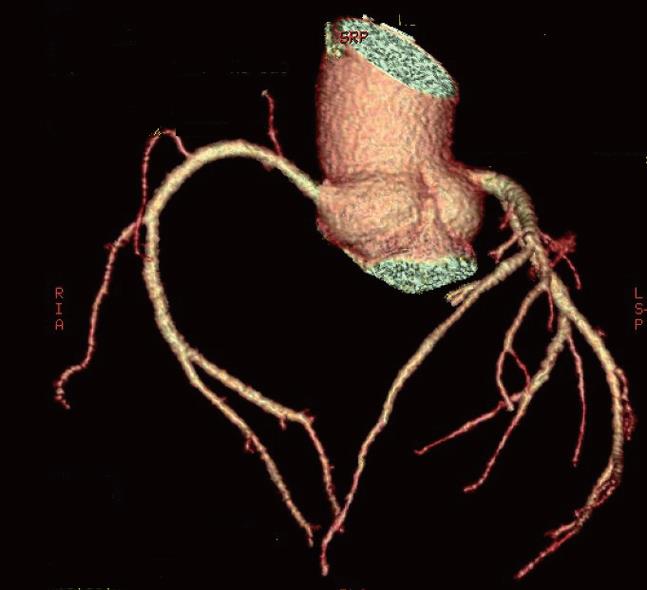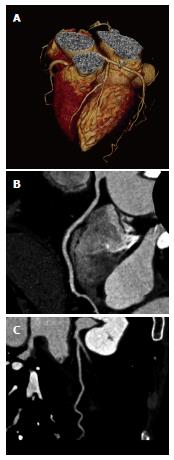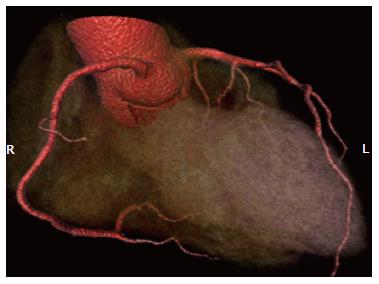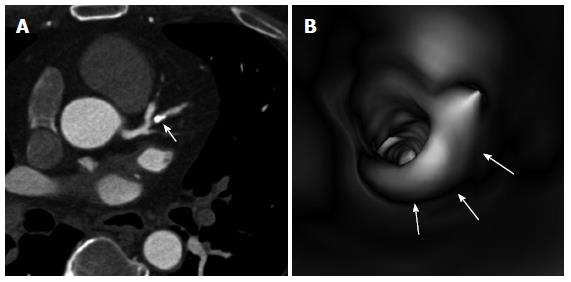Copyright
©2013 Baishideng Publishing Group Co.
World J Cardiol. Dec 26, 2013; 5(12): 473-483
Published online Dec 26, 2013. doi: 10.4330/wjc.v5.i12.473
Published online Dec 26, 2013. doi: 10.4330/wjc.v5.i12.473
Figure 1 Three-dimensional volume rendering image acquired with 64-slice coronary computed tomography angiography demonstrates right and left coronary arteries without lumen stenosis.
Figure 2 New-generation dual-source multislice computed tomography.
A: 3D volume rendering image acquired with dual-source coronary computed tomography angiography shows excellent visualisation of normal left coronary artery and its side branches; B, C: Curved planar reformation clearly shows the anatomical structure of right and left coronary arteries.
Figure 3 Electrocardiogram-triggered coronary computed tomography angiography.
Prospectively ECG-triggered coronary computed tomography angiography shows a mixed plaque at the mid-segment of right coronary artery (A, arrows), and calcified plaques at the proximal segment of left anterior descending branch (B, arrows). ECG: Electrocardiogram.
Figure 4 3D volume rendering image acquired with 320-slice coronary computed tomography angiography in a single heartbeat shows excellent visualisation of coronary arteries and side branches without artifacts.
Figure 5 Prospectively electrocardiogram-triggered coronary computed tomography angiography and coronary arteries.
Prospectively ECG-triggered coronary computed tomography angiography curved planar reformatted images show right (A) and left (B) coronary arteries with blurred borders due to motion artifacts. ECG: Electrocardiogram.
Figure 6 A severely calcified plaque is present in the left coronary artery (ramus intermedius) (A, arrow), with impression of more than 90% lumen stenosis on a 2D axial image.
Corresponding 3D virtual endoscopy views shows the intraluminal protrusion sign due to presence of plaque (B, arrows), but with less than 60% lumen stenosis.
- Citation: Sabarudin A, Sun Z. Coronary CT angiography: Diagnostic value and clinical challenges. World J Cardiol 2013; 5(12): 473-483
- URL: https://www.wjgnet.com/1949-8462/full/v5/i12/473.htm
- DOI: https://dx.doi.org/10.4330/wjc.v5.i12.473














